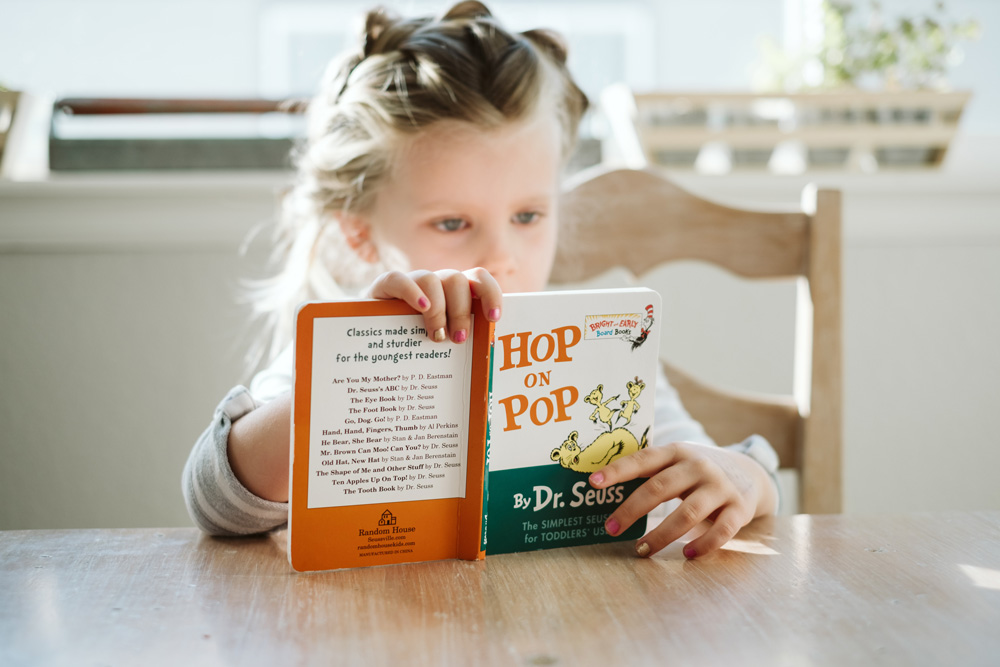How Phonological Awareness Helps Children Learn To Read
Whether you're a parent, a teacher, or just interested in childhood development, you know that reading is one of the most difficult yet impactful skills a child can learn in their early years. There are several building blocks to developing reading proficiency, including simple strategies like learning the alphabet and more complicated concepts like phonics. One important skill taught in elementary education is phonological awareness.
What Is Phonological Awareness?
When children develop phonological awareness, they're learning that words are made up of different units of sound (called phonemes) that can be blended together to build words. Identifying rhyming words, syllables, alliteration (words that begin with the same sound), and individual words are all important phonological awareness skills.
Fluent readers learn to recognize sound patterns and individual sounds, which helps them to sound out new words when they come across them. Developing phonological awareness in preschoolers sets them up for more advanced reading skills, like spelling, comprehension, and punctuation, in the years to come.
What Does Phonological Awareness Have To Do With Reading?
Phonological awareness in children is key to developing literacy skills. Without phonological ability, children would be unable to read or spell without memorization—a hefty task for a young child! Phonological awareness reduces the burden of memorization by giving children a toolkit of skills to use when they come across unfamiliar words.
Phonological Awareness and Dyslexia
Phonological skills are important for all young readers, but they are particularly valuable for children with dyslexia or other developmental disorders. Studies show that up to 15–20% of children may have dyslexia, but phonological awareness in preschoolers can help prevent it from developing.
Children with dyslexia may be poor readers because they struggle with reading tasks like mixing up words and spelling. Phonological awareness programs geared towards children at risk of developing dyslexia, such as those with a family history of learning disabilities, can help prevent dyslexia.

Phonological Awareness vs. Phonemic Awareness
Phonemic awareness is the most difficult and complex phonological skill. Phonemic awareness skills include segmenting sounds that make up words into separate speech sounds, called phonemes. Phonemes are the smallest unit of sound in the English language. Phonemes are different from letters—while there are only 26 letters, there are 44 phonemes spelled various ways.
The different vocabulary around phonological reading skills can be confusing, but each childhood literacy curriculum will include the teaching of the following:
Alphabetic Principle—Learning the names and shapes of the 26 letters of the alphabet (ex: A, B, C).
Awareness of Phonemes—Learning the 44 unique phoneme sounds that make up words (ex: The word "eat" is made up of 3 letters but only 2 phonemes, /ee/ and /t/). Phonemic awareness skills involve spoken language and auditory processing.
Phonics—Learning the relationships between letters and sounds (ex: Understanding the letters "ea" make the /ee/ phoneme from the last example). Phonics combines the auditory skills of phonemic awareness with the visual representation skills of the alphabet.
Phonological Awareness—Combines alphabetic principles, an awareness of phonemes, and phonics skills to teach children to blend sounds to build words and decode written words into sounds for comprehension.
As you can see, it's this awareness of sounds that helps children to improve their reading abilities and connect the written word to spoken language.
Standard Phonological Awareness and Phonemic Awareness Skills by Age
So now you understand what phonological awareness means, but what does phonological awareness in preschool children really look like? Every child learns at a slightly different pace, but in general, phonological awareness milestones by age are as follows:
By age 4, most children are able to use their auditory skills to recognize and enjoy phonological similarities like rhyme or alliteration.
For your child, this might mean they can finish the end of a rhyming sentence in a familiar story or nursery rhyme. They may also enjoy books with a lot of rhyming and alliteration, like Dr. Seuss books.
By age 5, most children are recognizing what rhymes (and what doesn't) is probably old hat, and theybut children are continuing to develop their understanding of alliteration. Most children can also probably recognize syllables by this time.
5-year-olds may be able to pick out the word that doesn't rhyme in a list or clap the syllables for longer words.
By age 5.5 children are starting to develop phonological awareness in language, recognizing different phonemes, segmenting sounds, and beginning to blend words.
Children may be able to combine phonemes to create short words when prompted, like combining /m/ and /ee/ to make "me," and they may be able to identify the first or last sounds in words.
By age 6, they may be able to selectively delete phonemes from words. They can also blend more phonemes together to make longer words.
How To Teach Phonological Awareness at Home
There are many great activities you can do from home to help boost your child's phonological awareness skills and support healthy language development. In fact, you're probably already doing things to support their phonological ability without knowing it! These simple activities will be particularly helpful for children with dyslexia or poor readers.
Read rhyming books together with your child. Reading aloud and having your child listen can help with auditory processing, but encourage them to interact for added benefit—it will support their oral language skills and give them confidence when they provide the correct answer. Try reading a familiar rhyming book and having your child fill in the rhyme.
Nursery rhymes are great for language development. Sing or say them together, or encourage your child to finish the rhyme after you begin it.
Teach alliteration by playing "I Spy." Choose an object in the room beginning with a common letter or a sound, and have your child name other objects in the room that begin with the same letter or sound.
Practice blending by saying two different phonemes and asking your child what word they create. For example, make a /t/ and /ee/ sound and see if they can connect them to make the word "tea."
Remember, you don't need any specific curriculum or printouts to help your child with language development. Just take the opportunities you have to boost their confidence, and consult a professional like a teacher when necessary.
How To Teach Phonological Awareness at School
Phonological awareness instruction can be tricky in a group setting, since each child will learn at a different pace. Additionally, providing focused instruction to children with dyslexia or children with communication disorders or language impairments is difficult without additional support staff.
Phonological awareness in preschool children starts with listening. In order for children to build up to the more complex tasks of segmenting and blending, they must first be able to identify rhymes, syllables, and alliteration that they hear. Start with simple exercises that encourage students to listen and respond.
Keep these teaching tips in mind as you practice phonological awareness with students:
Go slow. If some students are struggling to grasp early concepts, do your best to wait for them to understand before proceeding. Remember, these skills are paramount to learning to read, so it's extremely important that all students understand them.
Ask students to respond with the correct answer simultaneously to help you easily identify which students are struggling. You may need to tell students that they can't respond with the answer until you say "go" or something similar to ensure all children get an opportunity to consider the question before answering.
Write down which students are struggling and with what concepts. These may be children who require one-on-one attention or more focused instruction to succeed.

Phonological Awareness Is the Key To Unlocking Reading
Childhood literacy is an early predictor of adult income and sets children up for a lifetime of learning. Voyager Sopris Learning® here to partner with you as a specialist in reading to achieve literacy for every child.
Let’s
work together to help your struggling readers achieve lifelong success.

